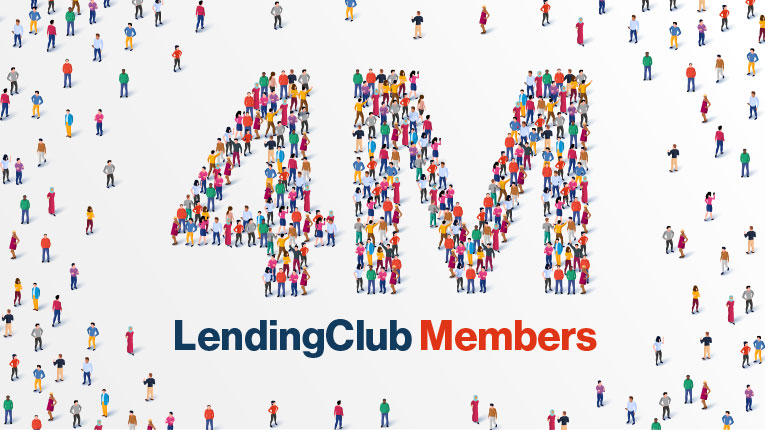{noun} A type of credit that allows the borrower to make charges and payments against a set borrowing limit, paying interest only on outstanding balances.
Revolving Credit
A type of credit that allows the borrower to make charges and payments against a set borrowing limit, paying interest only on outstanding balances.
What is Revolving Credit?
Revolving credit is a type of credit that lets you borrow money as needed up to an amount called your credit limit. Borrowing reduces your available credit, and repayment replenishes your credit limit (minus the interest and fees charged). Revolving credit does not have a fixed number of payments. This differs from installment credit which lets you borrow a lump sum and pay it back over a set number of fixed monthly payments.
How Does a Revolving Line of Credit Work?
It helps to think of a revolving line of credit as a renewable source of funds within a set credit limit. The lender sets the credit limit upon application approval. You can use as much of your credit limit as you need, paying interest only on the money you borrow. As you repay what you’ve borrowed (plus interest and fees), your available credit replenishes, and you can continue borrowing against your revolving line up to the credit limit.
Types of Revolving Credit
The most common revolving credit products are lines of credit and credit cards.
Lines of credit come in different forms, including home equity lines of credit (HELOCs), personal lines of credit, and business lines of credit. Credit lines are typically issued by banks and credit unions, and generally you can draw on your line using special checks, ATM, telephone, and online banking. You’ll only pay interest on the money borrowed from your line of credit.
Some lines of credit may be limited in how the funds can be used, such as only for balance transfers from credit cards.
Credit cards are revolving credit accounts that, unlike lines of credit, require you make a purchase or cash advance to access your credit line. While card issuers reserve the right to change your credit limit, you can access your available credit as long as your account is in good standing. When you make purchases on a credit card, you can repay the balance in full by the end of your billing cycle to avoid interest charges and fees. If you don’t pay your outstanding balance in full,the balance “revolves,” or rolls over, to the next month and will accrue interest until paid in full.
Note: Both lines of credit and credit cards can be secured or unsecured. Secured accounts require collateral; unsecured accounts do not. For example, a HELOC uses your home as collateral. Credit cards are typically unsecured, but some secured cards require cash deposits as collateral.
Why is Revolving Credit Important?
Revolving credit offers greater borrowing flexibility than installment credit. For instance, if you get a $10,000 installment loan for a home remodeling project, you typically receive all the money at once and must start repaying on the entire loan balance immediately plus interest on that amount—even if you don’t use the funds right away. If you need more money, you’ll have to apply for a new loan.
On the other hand, if you get a line of credit or credit card with a $10,000 limit, you can draw on it as needed—say, $1,000 in January, $2,000 in April and $1,500 in June—and interest will accrue only on the amounts you borrow. As you pay back what you’ve borrowed, your available credit is restored up to your credit limit, so you can make future purchases without needing to apply for additional credit.
Since it doesn’t require fixed monthly payments, revolving credit can also offer greater payment flexibility than installment loans. If money is tight in a particular month, you have the option of only making the minimum payment on a revolving account, potentially making it easier to meet other financial obligations.
Revolving credit can also serve as a financial cushion. Even if you never use it, it’s there in case you need quick access to small amounts of cash in an emergency.
What Are the Risks of Revolving Credit?
Revolving credit has some drawbacks you should be aware of.
Collateral risk: If you fail to make payments on a secured revolving credit account, you could lose your collateral. With a secured credit card, that loss could be a few hundred dollars. With a HELOC, you stand to lose your home.
High interest rates: Revolving credit typically has higher interest rates than installment credit. Interest rates for most credit cards and many lines of credit are also variable, meaning they can change over time based on economic conditions.
Excessive debt: If you only make the minimum payment on a credit card, you could accumulate a large balance. Credit card interest is typically compounded, meaning interest accrues on both the balance of your purchases and on previously applied interest. Compound interest can cause your balance to snowball until it’s difficult to pay down.
How Does Revolving Credit Affect Your Credit Score?
Revolving credit could help your credit score in several ways.
On-time payments: Making revolving credit payments on time could boost your credit, since timely payments are a major factor in your FICO® Score.
Responsible credit utilization: Keeping your revolving credit balance below 30% of your credit limit could increase your credit score. Ideally, you would pay your credit card balances in full each month.
Diverse credit mix: A variety of accounts, including installment credit and revolving credit, could show lenders you can successfully manage different types of debt.
Revolving credit could also have negative impacts on your credit score when not managed responsibly.
Late payments: Missing payments could have a significant negative impact on your credit score. Setting up auto-payments on your revolving credit accounts can help ensure you never miss a due date.
Excessive credit utilization: Consistently carrying balances that exceed 30% of your available credit limit can reduce your credit score.
Hard inquiry: When you apply for revolving credit, creditors perform a credit check called a hard inquiry, which could cause a small, temporary dip in your credit score.
You May Also Like












